Subacromial Bursitis
Updated:
What is subacromial bursitis?
Subacromial bursitis is a condition characterized by tissue damage and inflammation of the subacromial bursa (a small fluid filled sac located beneath the bony prominence at the top / outer aspect of the shoulder) causing pain in the shoulder.
The shoulder joint is a ball and socket joint. The socket arises from the outer aspect of the shoulder blade, whilst the ball arises from the upper aspect of the humerus (upper arm bone). Just above the ball and socket joint of the shoulder is a bony prominence known as the acromion (figure 1).
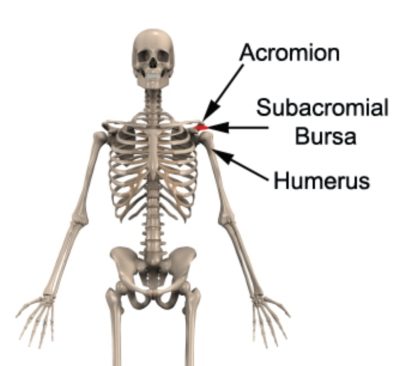
Beneath the acromion lies a bursa known as the subacromial bursa (figure 1). A bursa is a small sac filled with lubricating fluid and is designed to reduce friction between adjacent soft tissue or bony layers. The subacromial bursa reduces friction between the bony prominence of the acromion (above the bursa) and the tendon of the supraspinatus muscle (which attaches to the upper aspect of the humeral head) below the bursa.
During certain activities, such as arm elevation, rotating the shoulder, lifting, pushing or pulling or lying on the shoulder, friction and compressive forces are placed on the subacromial bursa. Pressure may also be placed on the subacromial bursa following a direct impact or fall onto the point of the shoulder, elbow or outstretched hand. When these forces are excessive due to too much repetition or high force, irritation and inflammation of the bursa may occur. When this occurs, the condition is known as subacromial bursitis.
Subacromial bursitis often occurs in association with other conditions of the shoulder such as a rotator cuff tear or tendinopathy, shoulder impingement or shoulder instability.
Causes of subacromial bursitis
Subacromial bursitis most commonly occurs due to repetitive or prolonged activities placing strain on the subacromial bursa. This typically occurs due to:
- repetitive or prolonged overhead or arm elevation activities
- repetitive or prolonged use of the arm in front of the body
- activities involving rotation of the shoulder
- lifting (especially overhead)
- excessive pushing or pulling activities (placing strain on the bursa via the supraspinatus tendon)
- putting weight through the affected arm
- lying on the affected side
Occasionally, the condition may occur suddenly due a direct blow to the point of the shoulder or due to a fall onto the shoulder, elbow or outstretched hand.
In athletes, subacromial bursitis may be seen in throwing sports (such as cricket or baseball), swimming (particularly freestyle and butterfly), racquet sports (such as tennis), weight lifting or paddling sports (such as kayaking).
Anomalies of the acromion bone, degenerative changes to the AC joint, or bony spurs known as osteophytes, may predispose a patient to developing subacromial bursitis.
Signs and symptoms of subacromial bursitis
Patients with this condition typically experience pain at the top, front, back or outer aspect of the shoulder. Pain may also radiate into the upper arm as far as the elbow. In less severe cases, patients may only experience an ache or stiffness in the shoulder that increases with rest following activities placing strain on the bursa. These activities typically include arm elevation activities, use of the arm in front of the body or overhead, shoulder rotating activities, lifting, pushing or pulling, placing weight through the arm or lying on the affected side. The pain associated with this condition may also warm up with activity in the initial stages of injury.
As the condition progresses, patients may experience symptoms that increase during activity or sport, affecting performance. Patients with subacromial bursitis may also experience pain on firmly touching the top / outer aspect of the shoulder. A painful arc of arm elevation and / or a feeling of shoulder weakness may also be present particularly when attempting to lift or elevate the arm overhead.
Diagnosis of subacromial bursitis
A thorough subjective and objective examination from a physiotherapist may be sufficient to diagnose subacromial bursitis. An ultrasound is usually the common investigation used to identify subacromial bursitis. Further investigations such as an X-ray, CT or MRI scan are often required to assist diagnosis and assess the severity of the condition or the presence of other conditions.
Prognosis of subacromial bursitis
Most patients with this condition heal well with appropriate physiotherapy and return to normal function in a number of weeks. Occasionally, rehabilitation can take significantly longer and may take many months in those who have had their condition for a long period of time, or, in those with other associated injuries such as rotator cuff pathology. Early physiotherapy treatment is vital to hasten recovery in all patients with subacromial bursitis.
Treatment for subacromial bursitis

Members Only ContentBecome a PhysioAdvisor Member to gain full access to this exclusive content. For more details see Become a Member. Already a member? Login Now
Contributing factors to the development of subacromial bursitis
There are several factors which can predispose patients to developing this condition. These need to be assessed and corrected with direction from a physiotherapist. Some of these factors include:
- joint stiffness (particularly the shoulder, AC joint, neck or upper back)
- shoulder instability
- bony anomalies of the acromion or AC joint
- muscle tightness (particularly the rotator cuff, pectorals and deltoid)
- poor posture
- inappropriate or excessive training or activity
- inadequate recovery from training or activity
- inadequate warm up
- muscle weakness (especially the rotator cuff and scapula stabilisers)
- muscle imbalances
- inadequate rehabilitation following a previous shoulder injury or surgery
- inappropriate technique (e.g. swimming stroke, tennis serve, throwing)
Physiotherapy for subacromial bursitis
Physiotherapy treatment is vital to hasten the healing process, ensure an optimal outcome and reduce the likelihood of recurrence in all patients with this condition. Treatment may comprise:
- soft tissue massage
- dry needling
- electrotherapy (e.g. ultrasound, TENS etc)
- stretches
- joint mobilization (of the shoulder, neck and upper back)
- joint manipulation
- ice or heat treatment
- the use of a sling
- progressive exercises to improve strength, flexibility, posture and scapula stability
- correction of abnormal biomechanics or technique
- education
- postural taping
- the use of a postural support
- anti-inflammatory advice
- activity modification advice
- a gradual return to activity program
Other intervention for subacromial bursitis
Despite appropriate physiotherapy management, some patients with this condition do not improve adequately. When this occurs the treating physiotherapist or doctor will advise on the best course of management. This may include further investigations such as X-rays, ultrasound, MRI or CT scan, pharmaceutical intervention, corticosteroid injection or referral to appropriate medical authorities who will advise on any interventions that may be appropriate to improve the condition.
Exercises for subacromial bursitis
The following exercises are commonly prescribed to patients with subacromial bursitis. You should discuss the suitability of these exercises with your physiotherapist prior to beginning them. Generally, they should be performed 2 – 3 times daily and only provided they do not cause or increase symptoms.
Your physiotherapist can advise when it is appropriate to begin the initial exercises and eventually progress to the intermediate, advanced and other exercises. As a general rule, addition of exercises or progression to more advanced exercises should take place provided there is no increase in symptoms.
Initial Exercises
Shoulder Blade Squeezes
Begin this exercise standing or sitting with your back straight. Your chin should be tucked in slightly and your shoulders should be back slightly. Slowly squeeze your shoulder blades together as hard and far as possible provided it does not cause or increase symptoms (figure 2). Hold for 5 seconds and repeat 10 times.

Pendular Exercises
Begin leaning forwards with your uninjured forearm supported on a table or bench. Keeping your back straight and your shoulder relaxed, gently swing your injured arm forwards and backwards as far as you can go without pain and provided you feel either nothing, or, no more than a mild to moderate stretch (figure 3). Repeat 10 times provided the exercise does not cause or increase symptoms. Repeat the exercise swinging your arm side to side provided it is pain free.
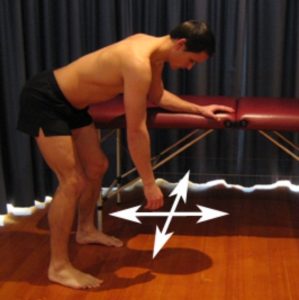
Pendular Circles
Begin leaning forwards with your uninjured forearm supported on a table or bench. Keeping your back straight and your shoulder relaxed, gently swing your arm in circles clockwise as far as you can go without pain and provided you feel either nothing, or, no more than a mild to moderate stretch (figure 4). Repeat the exercise swinging your arm counter clockwise. Repeat 10 times in each direction provided the exercise does not cause or increase symptoms.
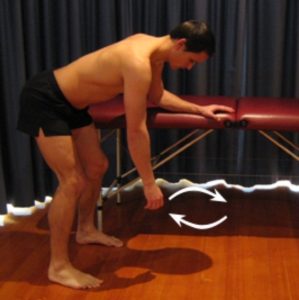
Foam Roller Stretch
Place a foam roller under your upper back as demonstrated (figure 5). Breathe normally keeping your back and neck relaxed. Hold this position for 15 – 90 seconds provided it is comfortable and does not cause pain.
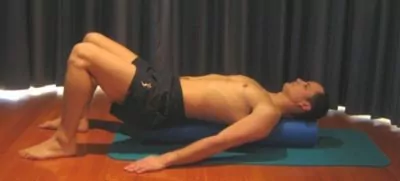
Intermediate Exercises

Members Only ContentBecome a PhysioAdvisor Member to gain full access to this exclusive content. For more details see Become a Member. Already a member? Login Now
Advanced Exercises

Members Only ContentBecome a PhysioAdvisor Member to gain full access to this exclusive content. For more details see Become a Member. Already a member? Login Now
Other Exercises

Members Only ContentBecome a PhysioAdvisor Member to gain full access to this exclusive content. For more details see Become a Member. Already a member? Login Now
Rehabilitation Protocol

Members Only ContentBecome a PhysioAdvisor Member to gain full access to this exclusive content. For more details see Become a Member. Already a member? Login Now
 Physiotherapy products
Physiotherapy products
Some of the most commonly recommended products by physiotherapists to hasten healing and speed recovery in patients with this condition include:
-
 Wheat Bags
Wheat Bags -
 AllCare Band
AllCare Band -
 Oppo Humerus Brace (OPP4072)
Oppo Humerus Brace (OPP4072) -
 Premium Strapping Tape 38mm (Victor)
Premium Strapping Tape 38mm (Victor) -
 AllCare Pro-TENS Machine
AllCare Pro-TENS Machine -
 AllCare Tubing
AllCare Tubing -
 AllCare Spikey Massage Ball
AllCare Spikey Massage Ball -
 AllCare Instant Cold Pack (15 x 25cm)
AllCare Instant Cold Pack (15 x 25cm) -
 AllCare Foam Roller Round
AllCare Foam Roller Round -
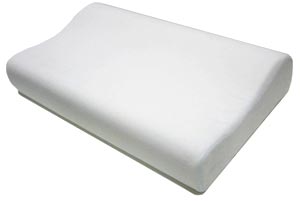 Dentons Impressions Classic Memory Foam Therapeutic Pillow
Dentons Impressions Classic Memory Foam Therapeutic Pillow -
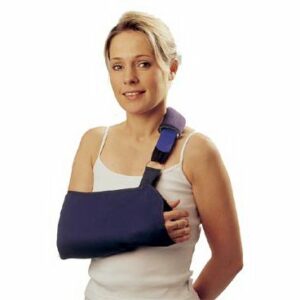 Actimove Arm Sling (Mitella)
Actimove Arm Sling (Mitella)
To purchase physiotherapy products for subacromial bursitis click on one of the above links or visit the PhysioAdvisor Shop.
 Find a Physio
Find a Physio
Find a physiotherapist in your local area who can treat this condition.
 More Exercises
More Exercises
- Shoulder Strengthening Exercises.
- Shoulder Stretches.
- Scapula Stability Exercises.
- Rotator Cuff Strengthening Exercises.
- Arm Strengthening Exercises.
- Arm Stretches.
 More Information
More Information
- Read about Postural Taping.
- Read about improving your Posture.
- View detailed information on when to use Ice or Heat.
- Learn about initial injury management and the R.I.C.E. Regime.
- View detailed information on Returning to Sport.
- View our Shoulder Diagnosis Guide.
Become a PhysioAdvisor Member

Link to this Page
If you would like to link to this article on your website, simply copy the code below and add it to your page:
<a href="https://physioadvisor.com.au/injuries/shoulder/subacromial-bursitis”>Subacromial Bursitis – PhysioAdvisor.com</a><br/>Subacromial bursitis is characterised by tissue damage & inflammation of the subacromial bursa causing pain in the shoulder. Check its causes, symptoms & treatment now.
Return to the top of Subacromial Bursitis.

